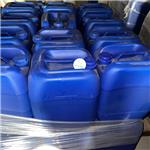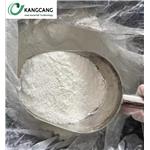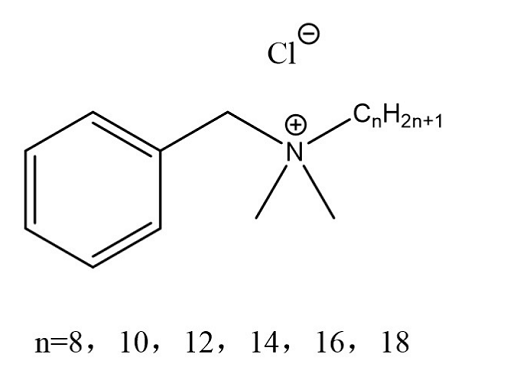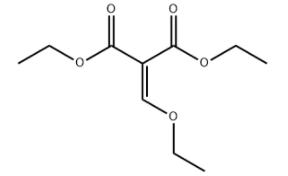What is Benzalkonium chloride?
Identification
Product Name: Benzalkonium chloride
Synonyms: BENZALKONIUM CHLORIDE, BP 99+%;BenzalkoniumChlorideB.P.;BenzalkoniumChloridePure;BENZALKONIUM CHLORIDE, PHARMA;BENZALKONIUM CHLORIDE SOLUTION 10%;BENZALKONIUM CHLORIDE SOLUTION 50%, PHARMA;BENZALKONIUM CHLORIDE, POWDER;BENZALKONIUM CHLORIDE, GEL
CAS: 8001-54-5
MF: C17H30ClN
MW: 283.88
EINECS: 616-786-9
Properties
Boiling point >100°C/760mmHg
Density 0.98
Storage temp. 2-8°C
Solubility Very soluble in water and in ethanol (96 per cent). An aqueous solution froths copiously when shaken.
Form Viscous Solution
Color Clear or white to yellow, may contain yellow-white fragments
Specific Gravity 0.98
Stability: Stable. Incompatible with strong oxidizing agents, moisture. Hygroscopic.
Description
Benzalkonium chloride is a quaternary ammonium mixture of alkyl, dimethyl and benzyl ammonium chlorides.It is an irritant rather than a sensitizer, but may cause contact dermatitis in nursing and medical personnel. An unusual case was reported in a farm worker who used a detergent containing benzalkonium chloride to clean the piggery. Benzalkonium chloride is a preservative with anti-microbial and deodorant properties. It can also be used as a surfactant. With continuous use, it may cause occasional allergic reactions.
Uses
Benzalkonium chloride is the most widely used preservative in ophthalmology. It is a quaternary ammonium compound that acts as an antimicrobial agent by denaturing proteins and disrupting cytoplasmic membranes. Benzalkonium chloride is a quaternary ammonium compound and it is the most commonly used antimicrobial preservative. It was initially used in hard contact lens solutions but is now ubiquitous. Currently, it can be found in most topical multi-use ophthalmic preparations.
BAK is a detergent that denatures proteins and causes lysis of cytoplasmic membranes and is therefore a potent broad-spectrum antiseptic. As a surfactant, BAK can solubilize the intercellular junctions within the corneal epithelium to enhance drug delivery.10 This also allows increased penetration of BAK and long-term accumulation in ocular tissue leading to amplification of its side effects.
Benzalkonium chloride (BAK) is the most common preservative in topical medication used to treat glaucoma. It acts by disrupting bacterial cell membranes and is found in more than half of all topical ophthalmic medications. This bactericidal process also causes toxic effects to the eye itself by unleashing free radicals, inducing cell death and promoting inflammatory cytokines. Some of the frequently noted adverse effects of glaucoma medications are likely caused or exacerbated by BAK.
Toxicity
Based on literature review, benzalkonium chloride used as preservative in continuous albuterol nebulizer solutions may produce bronchospasm that is dose dependent and cumulative. Benzalkonium chloride containing albuterol use during severe acute asthma exacerbations may antagonize the bronchodilator response to albuterol, prolong treatment, and increase the risk of albuterol-related systemic adverse effects. The authors recommend that only preservative-free albuterol products be used.
Sensory systems: Ocular surface disturbances secondary to the toxic effects of benzalkonium chloride lead to a shift in inflammatory mediators and migration of Langerhans cells. Increases in the Langerhans cell count during benzalkonium chloride therapy may be a reliable sign of inflammatory stimulation. In a double-blind, randomized study there was a significant increase in Langerhans cells in the central cornea of 20 healthy volunteers after 12 weeks of application of a benzalkonium chloride solution 0.01%. This was not associated with dry eyes and the Langerhans cell count returned to normal 4 weeks after the end of the benzalkonium chloride administration.
Corneal toxicity (corneas damaged and exhibiting degenerated microvilli) was detected during an in vivo experiment in rabbits receiving benzalkonium chloride-preserved (0.02%) latanoprost, but not in benzalkonium-free latanoprost eye drops.
Immunologic: In a retrospective analysis of patch test data (1998–2010) from a hospital in MN, USA, the rate of allergic patch test results increased in the period from 5.5% to 8.8%. In a study from OH, USA, 29 (20%) of 142 subjects patch tested positive for benzalkonium chloride and/or benzethonium chloride. The authors stressed the potential coreaction to benzethonium chloride if sensitization to benzalkonium chloride occurred. In a multicenter study in Korea, 584 patients were patch tested for preservative allergens with a positive test rate of 12.1% for benzalkonium chloride.
);You may like
Related articles And Qustion
See also
Lastest Price from Benzalkonium chloride manufacturers

US $5.00-3.00/kg2024-04-26
- CAS:
- 8001-54-5
- Min. Order:
- 1000kg
- Purity:
- 99%
- Supply Ability:
- 5000kg/week

US $9.00-70.00/g2024-04-26
- CAS:
- 8001-54-5
- Min. Order:
- 10g
- Purity:
- 99%
- Supply Ability:
- 10 tons



